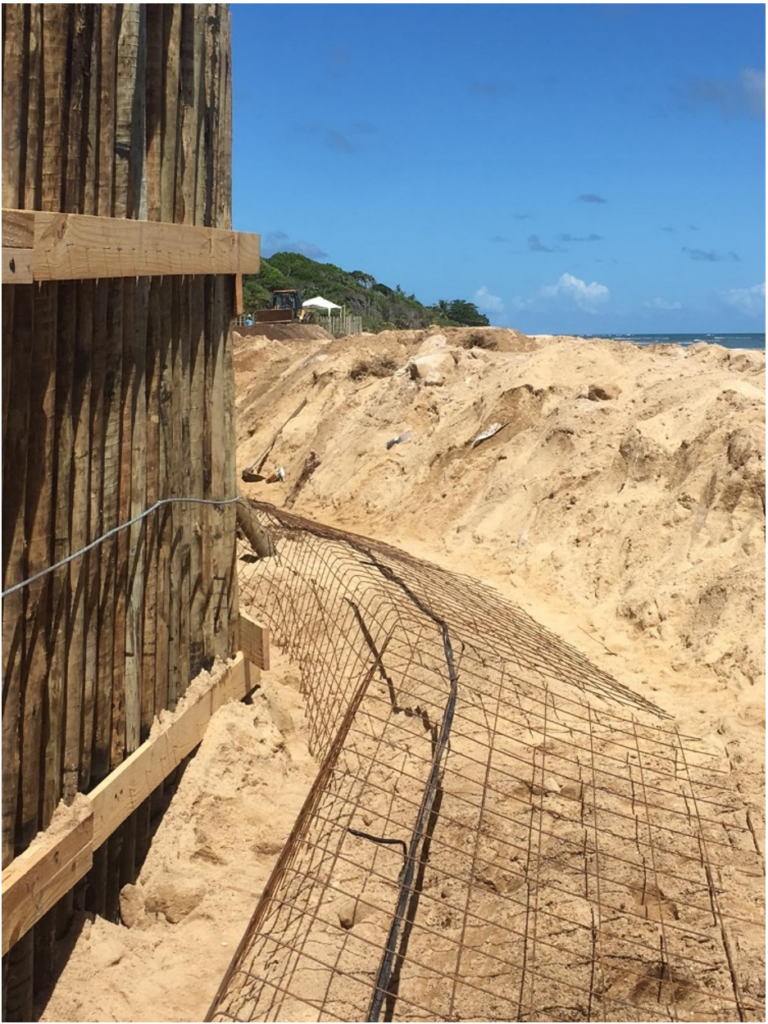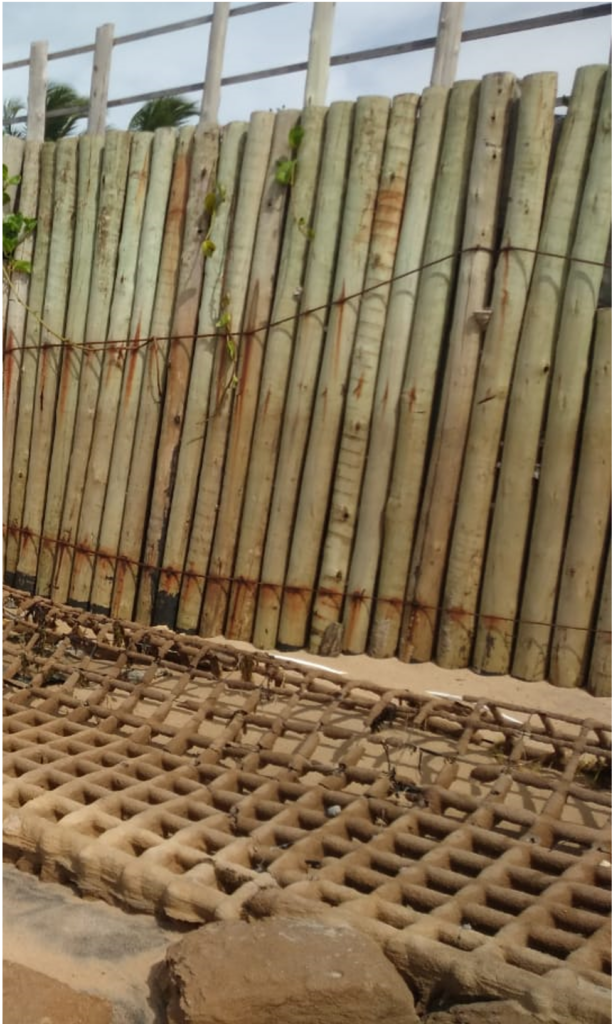ACTUAL WEAKNESSES
These structures require a very substantial input of riprap, and the blocks laid can easily weigh several tonnes each. The logistical resources required to build such a structure are considerable, the cost of transporting the riprap is often colossal, and the carbon footprint of such a structure is extremely heavy.
Riprap has to be laid trapezoidally to hold in place, and the footprint of such a structure is consequently very large.
What’s more, these groins require regular and costly maintenance (3% to 8% per year of their construction cost) to ensure their continued effectiveness.
OUR SOLUTION
Seacure designs, sizes and installs gabion groins, whose coastal protection properties are identical to those of traditional methods, plus multiple advantages:
- Reduced size of riprap required (e.g. 10 to 60kg pebbles instead of 1T to 3T)
- Reduced footprint by almost half
- Drastic reduction in the carbon cost of the structure, due to the reduced need for riprap and the greater ease of obtaining it close to the site of the structure.
- Possibility of reusing demolition materials
- Artificial reefs can be integrated into the structure



